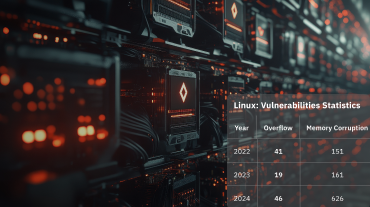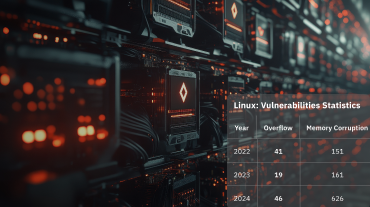Edge computing has revolutionized various industries by offering better performance, lower latency, and enhanced customer value. With the advent of edge computing infrastructure, organizations can leverage a distributed resource network to optimize their capabilities further. However, along with these benefits, enterprises often overlook the edge security issue.
Neglecting edge security can leave edge networks susceptible to distributed attacks and create entry points for cybercriminals to exploit. Protecting the edge is essential to safeguarding the overall edge infrastructure and preventing potential breaches. But strengthening edge security is a complicated task that requires much expertise and knowledge.
In this article, we will be focusing on the five facts that organizations must take into account when considering the adoption of edge security:
An increasing fleet of IoT edge devices
The growth in IoT edge devices has been driven by their significant value to enterprises, particularly in terms of processing vast amounts of data at the source where it is generated. For example, companies seeking to deploy computer vision applications for surveillance monitoring and object detection require edge devices with sufficient computing power. As a result, there has been an exponential increase in the deployment of IoT edge devices across various geographical locations within distributed edge environments.
However, this growth in IoT edge devices also comes with a corresponding increase in cyber threats. While connectivity and real-time data processing bring numerous benefits, they expose organizations to potential security breaches. The larger fleet of IoT devices operating at the edge, the more crucial it becomes for organizations to implement robust security measures.
To ensure effective edge security in a distributed edge environment, designing security agents directly deployed on IoT gateways is imperative rather than relying on cloud-based security solutions. Unlike cloud-based protection, which is limited in its ability to operate offline, edge security solutions can function in offline mode since they are deployed on physical hardware. This security approach proves highly efficient, even for IoT edge devices that may lose internet connectivity due to cyber attacks.
Lack of security from IoT device manufacturers
Businesses adopting edge computing often rely on IoT edge device manufacturers' integrated microcontroller security capabilities. However, these security controls with a dedicated module inside the system can bring complexities to provide efficient security to evolving cyber threats. Also, microcontrollers' limited processing power and memory may impede their ability to perform complex security tasks and keep up with the speed and scale of distributed edge infrastructure.
With the continuous evolution of cyber threats and their tactics, sophisticated techniques have been used to exploit vulnerabilities and gain unauthorized access to embedded edge devices. These attacks can have severe consequences, ranging from data breaches to financial losses. These traditional security solutions often depend on pre-defined signatures that malicious actors can easily bypass using advanced evasion techniques, including artificial intelligence.
To address these challenges, advanced edge cybersecurity solutions should offer early threat detection and response to protect IoT edge devices, irrespective of their scale and geographical location. It should employ a multi-layered security approach that ensures that the remaining layers can provide robust protection even if one layer is compromised. The security solution must be able to analyze advanced traffic patterns and anomaly detection algorithms to identify suspicious activities and potential intrusion attempts at the network level.
Complexities in managing security for containerized applications
Organizations increasingly use containerized applications to decentralize key components of their applications and bring them closer to the edge of the network. This approach offers several advantages, including reduced network costs, improved response times, and more efficient scaling of applications.
However, with the adoption of containerized applications, organizations face new complexities in managing and securing them effectively. There is a need for orchestration and automation. Companies often use platforms like Kubernetes to manage the lifecycle of containers. Security gaps in this orchestration layer can expose containerized applications to potential vulnerabilities.
These security gaps can be addressed by implementing an edge security solution that utilizes AI and machine learning algorithms to continuously analyze network traffic, device behavior, and data patterns. Autonomous AI allows the system to identify ongoing cyber attacks within seconds and take immediate action to interrupt them. It also adds intelligence and adaptability as it can continuously learn and adapt to emerging threats, evolving its detection and response capabilities.
Lack of visibility into organizational edge network
The lack of visibility can increase the risk of cyber attacks as organizations may overlook ongoing attacks or fail to detect malicious activities targeting their edge devices. This situation becomes particularly concerning when considering the potential impact of botnet attacks on the organizational edge network.
If one edge device within a network becomes compromised and joins a botnet, it can be a launching pad for further attacks. The compromised device can infect other edge devices on the same network, rapidly spreading the malware and expanding the botnet’s control over the edge infrastructure.
Edge-native security with network-based asset discovery capabilities ensures a comprehensive and accurate real-time view of the network assets and anomalies.
A centralized dashboard that provides enhanced visibility and management of the network, including a centralized dashboard for attack surface visibility and network topology signalling. The dashboard serves as a command center for managing the security of the edge network. It provides a unified view of the entire network infrastructure, highlighting abnormal behavior or potential security threats.
AI-driven cyber threats to embedded systems
The emergence of zero-day vulnerabilities in embedded systems has become a growing concern as these types of security attacks were previously unknown to the system. The vulnerabilities often remain undetected until they are actively exploited, leaving enterprises vulnerable to attacks as traditional security solutions are designed to mitigate known security threats. Therefore, when faced with zero-d ay vulnerabilities and adversarial AI attacks, these solutions may not be sufficient to detect and respond to sophisticated attacks.
To address this challenge, it is imperative to incorporate AI-based intrusion detection and prevention systems into edge security. This system should be able to autonomously execute all the machine learning models directly on the physical device itself. By doing so, the system can promptly block IP addresses and other sources of threats.
As organizations strive to effectively handle distributed applications and data in field locations, it becomes essential to integrate an edge security solution equipped with advanced features to stay ahead of cyber adversaries. This need extends across all industries that offer edge-specific services, emphasizing the significance of implementing a robust edge security solution to ensure the protection and integrity of edge computing environments.












